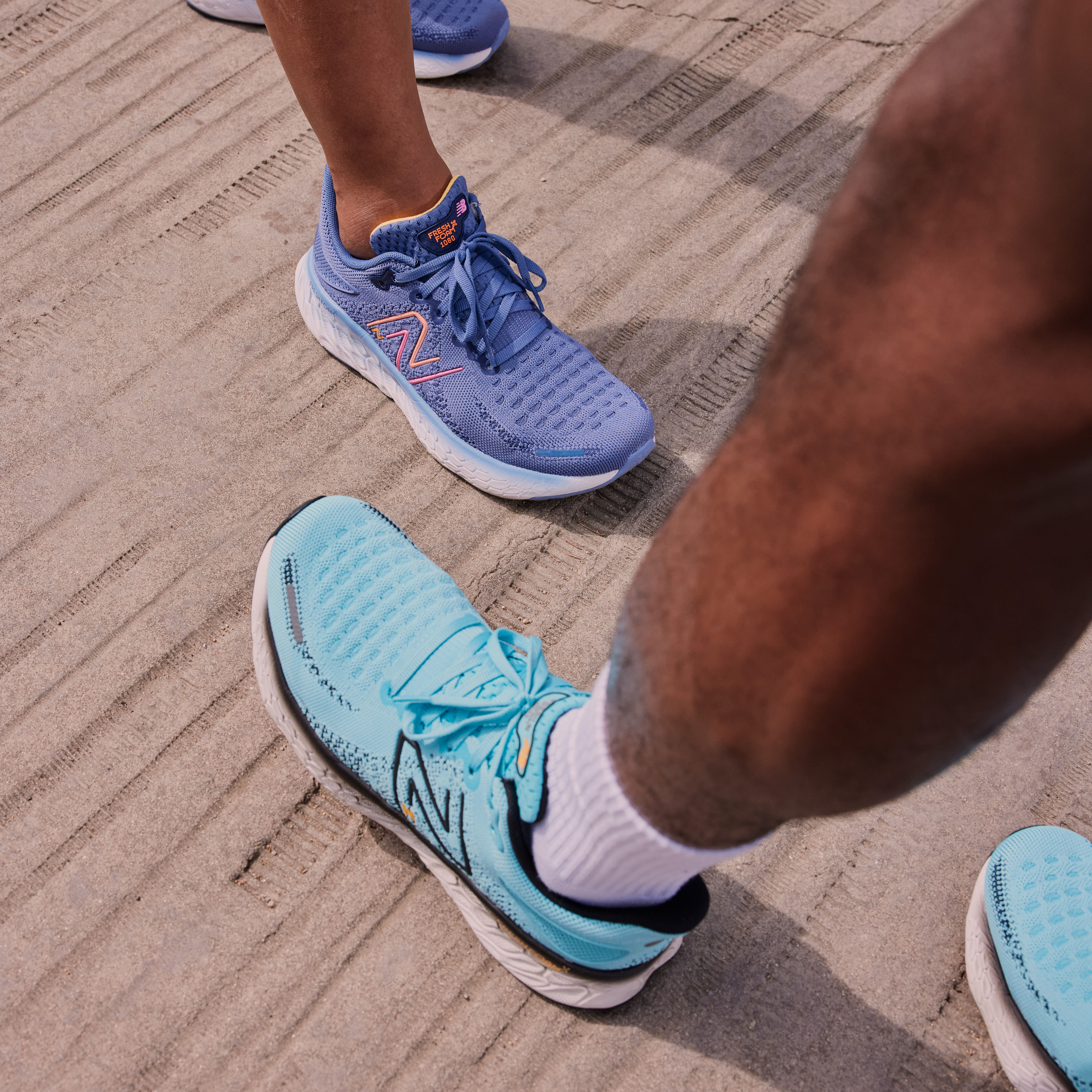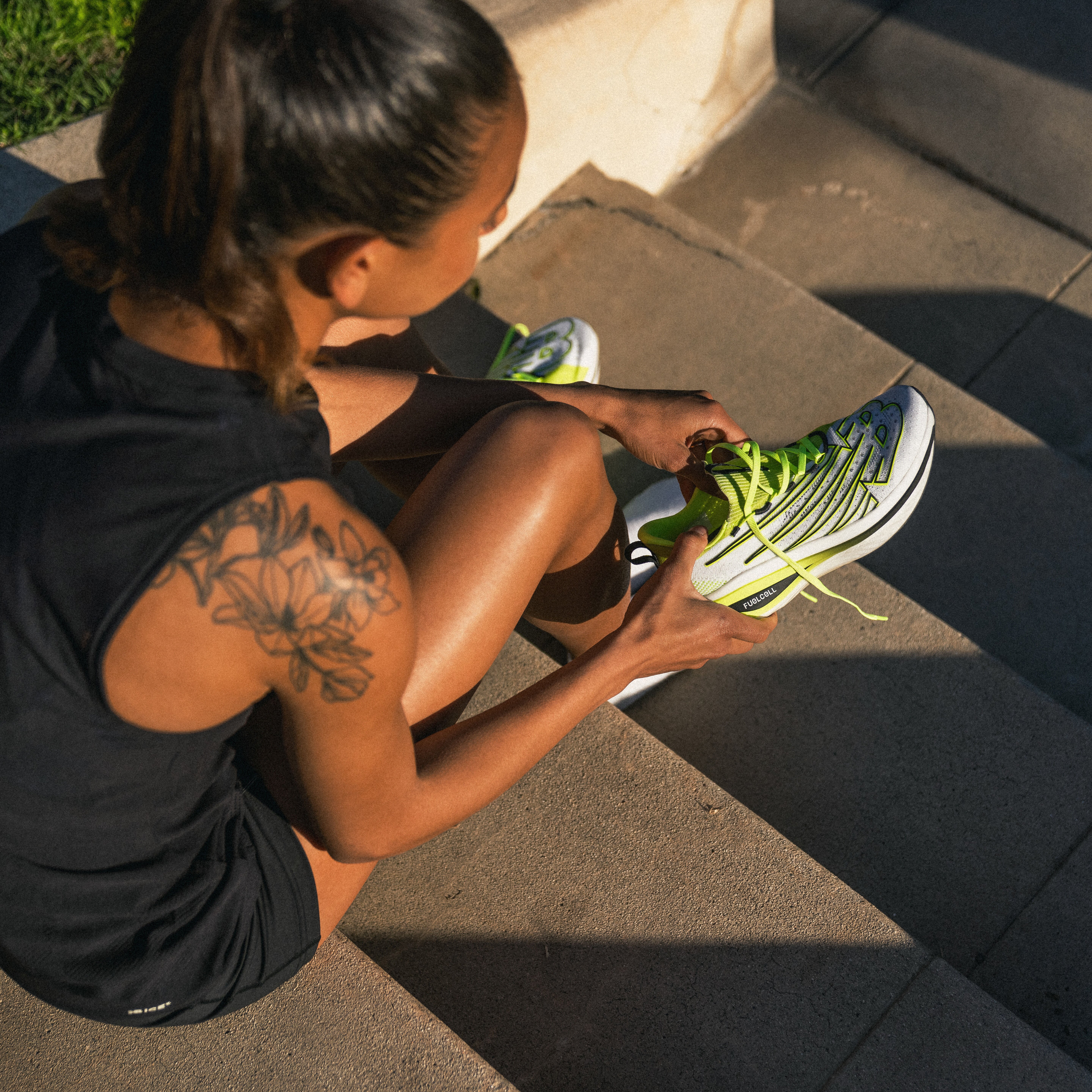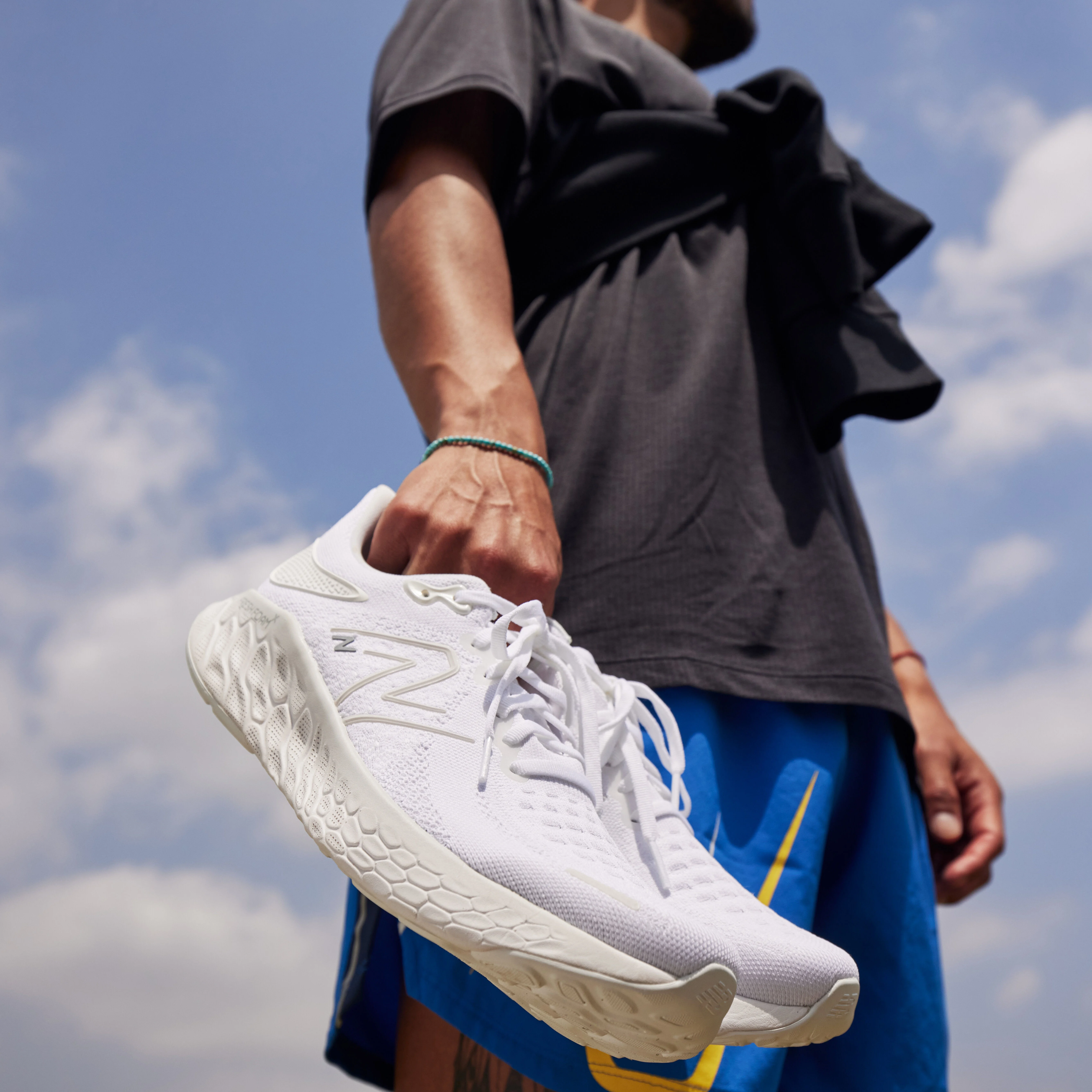-square.jpg)
What are carbon plate (or carbon fibre) running shoes?
Carbon plate running shoes have a thin - usually curved - carbon fibre plate sandwiched between the foam in the midsole. Carbon fibre is five times stronger than steel and lighter than aluminium, so it’s an ideal material to strengthen without weighing down. But it’s not just about the plate; the lightweight, springy foam and geometry of the shoe are equally important. The three elements work together to improve running efficiency.
We may think of carbon plate shoes as a new technology - within the last five or six years - but in fact, it goes back as far as the early 2000s. Researchers discovered that in a ‘normal’ running shoe, the foot acts like a brake and absorbs energy. In order to reduce energy loss, they needed to stop the foot bending so much, and they did this by stiffening the shoe with a flat carbon
fibre plate. While running-shoe companies - including New Balance - experimented with this idea, it was never entirely successful. There was a piece of the puzzle missing.
Traditionally, EVA (ethylene vinyl acetate) foam is used in the midsole of running shoes for cushioning. Recently companies have been developing new foams that are lighter, softer, and more responsive than EVA foam - like our nitrogen compound FuelCell foam technology that powers our FuelCell shoes range. These new foams can be stacked higher without adding weight to the shoe, which leaves room for a curved carbon plate. It seems to be the development of these proprietary foams that has allowed carbon plate technology to really take off.
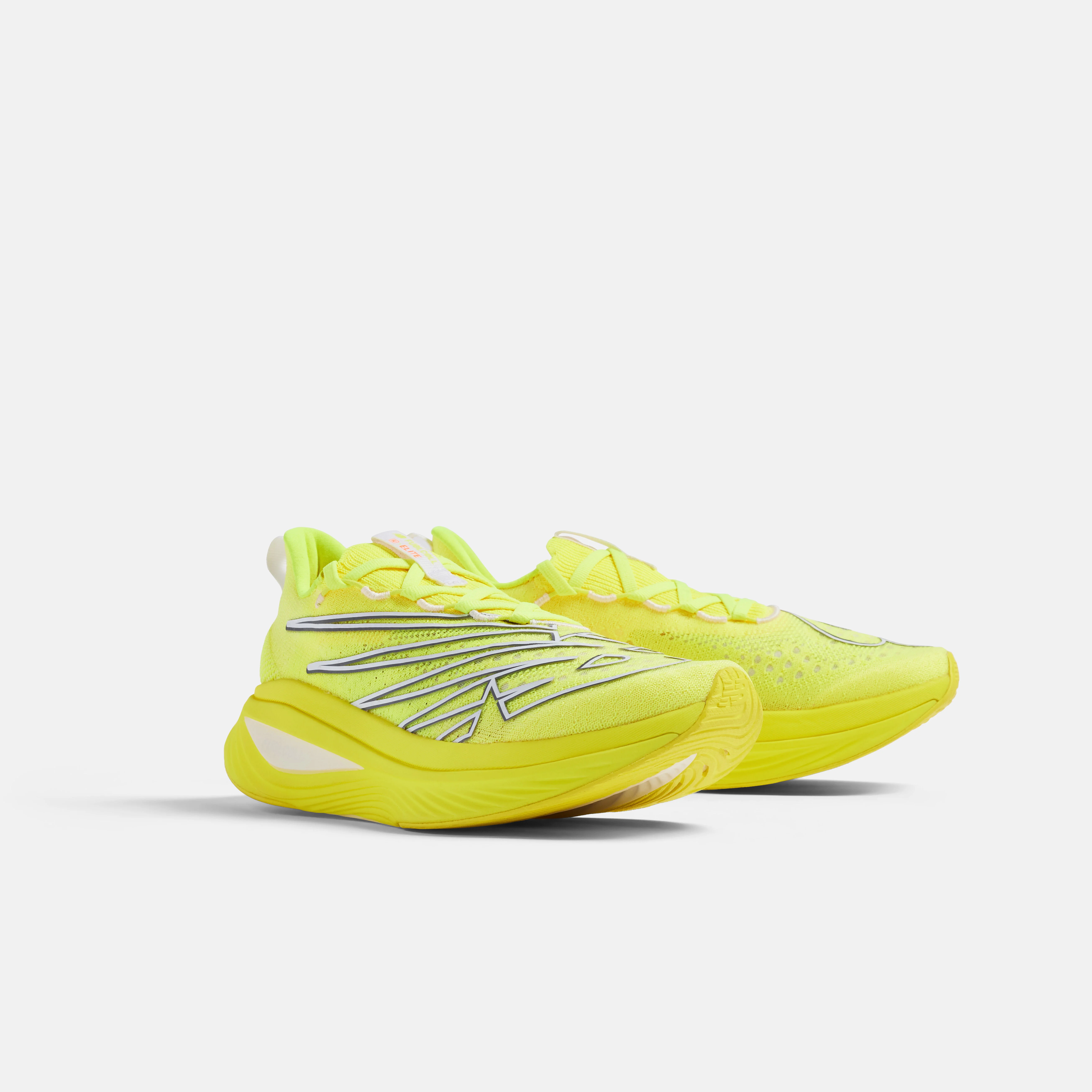
How do carbon plate running shoes work?
You may have heard the carbon plate in running shoes being compared to a ‘spring’ but this is a bit too simplistic and can also give the impression that running in carbon plate shoes requires little effort - which is, of course, not the case. So, what does the carbon plate in running shoes do? It can help to improve performance and running efficiency by:
• Enhancing energy return to the runner - the carbon fibre plate helps to compress and expand the midsole foam more quickly, sending more energy back to the runner instead of it being lost.
• Reducing ankle flexion and improving ankle mechanics - the curved shape of the carbon plate helps the natural rolling process of the foot, meaning the ankle joint and calf muscle have to do less work to propel you forward.
• Lifting the heel faster - the curved shape also helps the heel of the shoe to lift more quickly, moving the hips over the centre of gravity, to further improve forward momentum.
• Keeping the big toe straight - the stiff plate reduces the energy wasted by unnecessarily flexing the big toe during the toe-off phase of your stride. By optimising your musculoskeletal system, carbon running shoes
can potentially give you some considerable gains - some studies suggest up to 4% energy savings. Now that might not sound a lot but when we’re talking about shaving seconds or even minutes off your race time, it can make all the difference.
There are, of course, many variables that will affect how much benefit you get from carbon plate shoes. Everyone has a different running style and biomechanics - including stride length and frequency, ground contact time, foot landing position and current fitness levels - and all these factors come into play. For example, there’s some evidence to suggest that overpronators won’t get as much benefit from carbon running shoes because their foot mechanics are different. That’s not to say that you won’t get any advantage if you overpronate, just maybe not as much as someone with the perfect neutral foot.
-square.jpg?sw=808&sfrm=jpg)
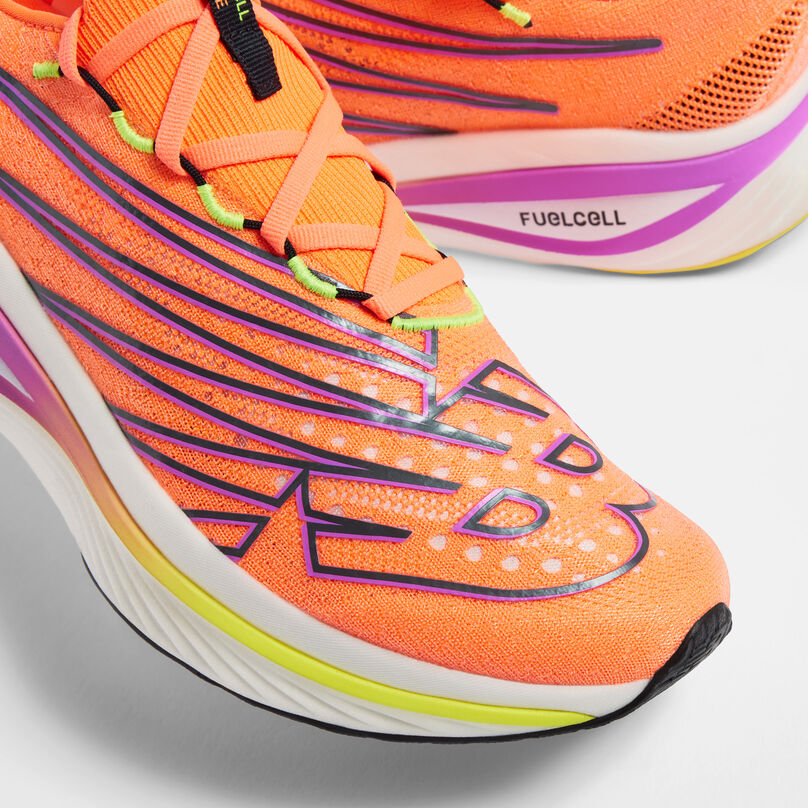
-square.jpg?sw=991&sfrm=jpg)
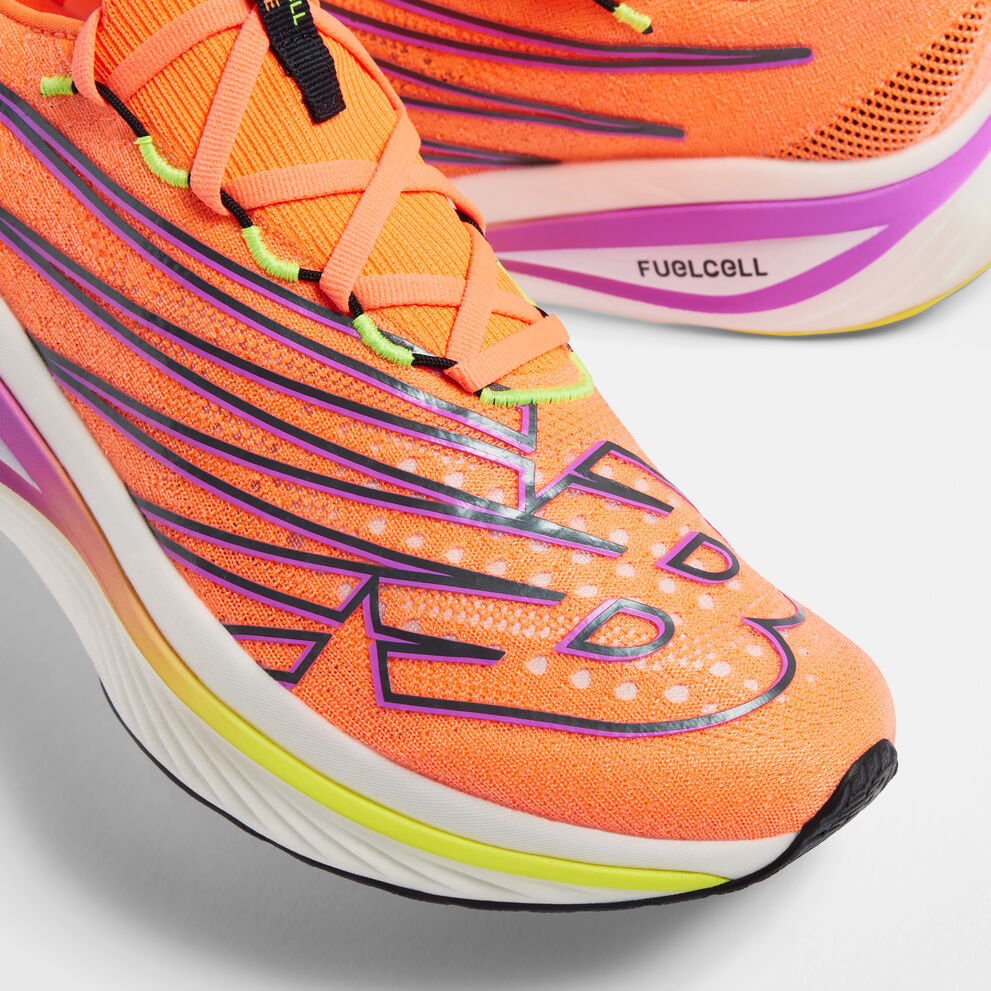
Which running shoes have carbon plates technology in them?
New Balance Energy Arc technology is our take on carbon plates and features in the FuelCell SuperComp family. In a unique midsole design with a hollow channel running lengthways through the shoe, an arched carbon plate is sandwiched in FuelCell foam. Each time your foot hits the ground, the plate is flattened into the void and as it reshapes, a higher amount of energy is returned to you, thus boosting the efficiency of every step to help push your maximum speed.
The FuelCell SuperComp family features three models:
Fuelcell SuperComp Trainer
Carbon-fibre plate running shoes are mostly known as racing shoes, designed to give you that competitive edge just when you need it the most. But with the FuelCell SuperComp Womens Trainer / FuelCell SuperComp Mens Trainer we have combined the performance of a race-day shoe with the durability of a high-mileage training shoe. The midsole is super-thick and bouncy, with a dramatic rocker design so you can really take advantage of the geometry as you run. From speed sessions to long training runs, the Fuelcell SuperComp Trainer is perfect for covering most of your miles.
Fuelcell SuperComp Elite v3
The FuelCell SuperComp Elite v3 Womens Trainer / FuelCell SuperComp Elite v3 Mens Trainer is our carbon plate made-for-race-day shoe. And whatever distance you’re racing, this shoe is fast. It’s nimble enough for a 5K or 10K, yet
cushioned enough for a marathon. The 40mm-thick midsole is soft, springy and responsive, and the bootie-style upper will give you a snug yet breathable fit.
Fuelcell SuperComp Pacer
Designed for 5k to half-marathon distances, our FuelCell SuperComp Pacer contains Energy Arc technology, a carbon fiber plate and a double-layer springy FuelCell midsole to help propel your strides forward. The sleek design offers runners a lower stack height racing solution and a snappy ground feel in comparison to the SuperComp Elite v3.
While there are no specifically designed carbon plate running shoes for overpronation, that doesn’t mean you can’t have a pair in your shoe rotation. You might find they don’t have the stability you need for regular training - particularly if you usually wear specific overpronation shoes - but they could still give you the edge on speed runs or race days.
There’s no denying it, carbon plate shoes have revolutionised the running shoe world. Whether its elites trying for a world record or amateurs looking for their best time yet, these next-generation shoes can be seen at the starting line of every race. And this is just the beginning for carbon plate technology. It’s still in its infancy, so imagine how far - and how fast - it might take us in the future.

